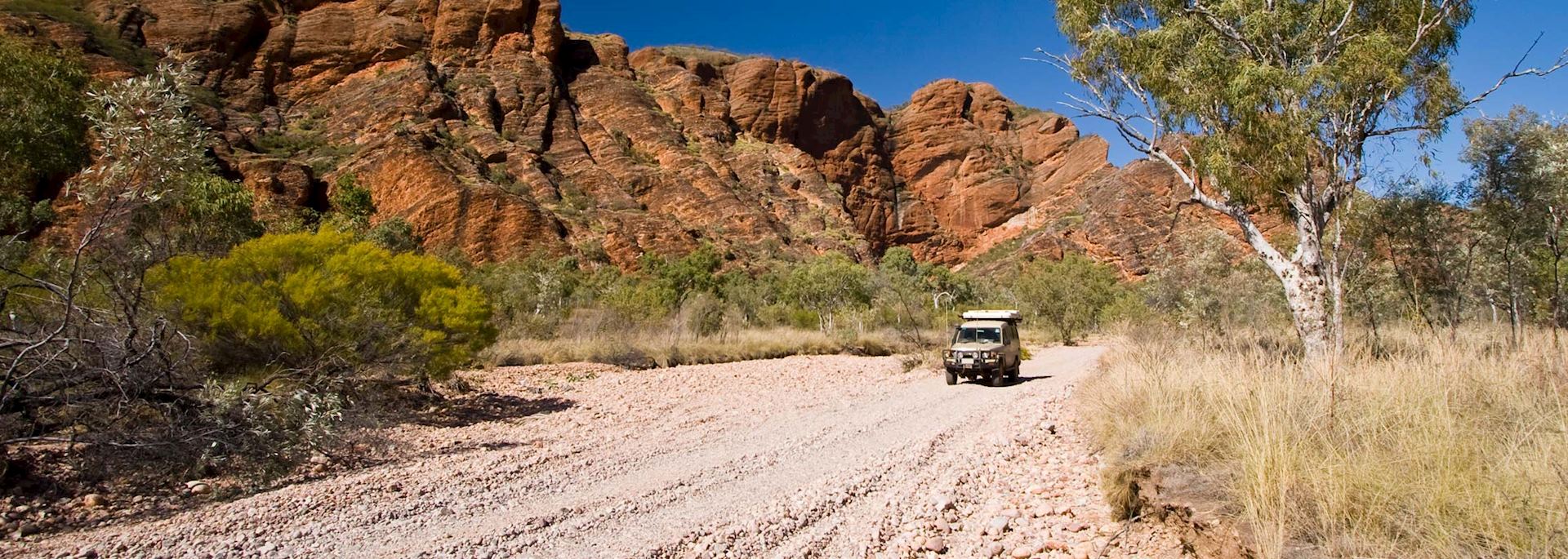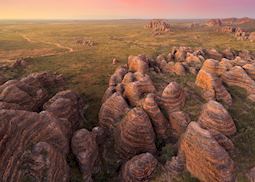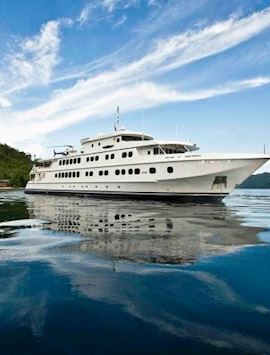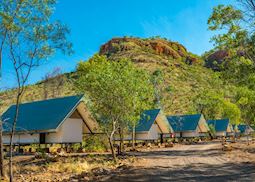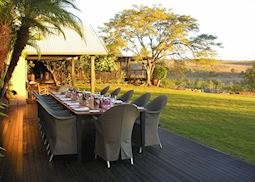Jump to:
One of the world's last unspoilt regions, this time-worn land shelters great beauty in its rugged isolation.
Pristine beaches fringe the Indian Ocean and through the wet season, from November to April, mighty rivers burst to life, thundering in waterfalls and feeding pockets of lush rainforest among the arid desert, vast open plains, complex cave systems and ancient boab trees.
The bird and wildlife here is astonishing and the local people are friendly, unpretentious and proud of their history.
Exploring the Kimberley
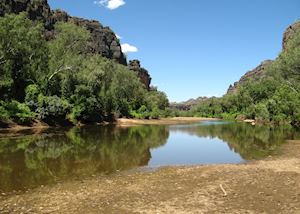 Broome, Derby and Kununurra are the main gateways, but outside of these areas the experience of the remote Outback is more important than the accommodation, where your choices are limited.
Broome, Derby and Kununurra are the main gateways, but outside of these areas the experience of the remote Outback is more important than the accommodation, where your choices are limited.
Most roads in this area are unsealed and require a 4x4 vehicle, so to explore the area you’ll have to choose between travelling alone, linking up with a small convoy of vehicles led by an experienced guide or joining a small group guided tour.
Our specialists will be able to advise which will best suit your interests, itinerary and experience.
who's been there

Start planning your tailor-made trip to the Kimberley by contacting one of our Australia specialists
-
01993 838 92501993 838 810
- Make an enquiry
Places to visit in the Kimberley
Featuring heavily on our experiences of visiting the Kimberley, these selected places are destinations that also prove consistently popular with our travellers. Our specialists can help you choose how to include them in your wider trip, based on your preferences.
Suggested itineraries featuring the Kimberley
Our itineraries will give you suggestions for what is possible when you travel in the Kimberley, and they showcase routes we know work particularly well. Treat them as inspiration, because your trip will be created uniquely by one of our specialists.
Places in and around the Kimberley
- Broome The Kimberley
- Cape Lévêque, Dampier Peninsula The Kimberley
- Derby The Kimberley
- El Questro Wilderness Park The Kimberley
- Kununurra The Kimberley
- Purnululu (Bungle Bungle) National Park The Kimberley
- Bullo River Station 255 miles away
Photos of the Kimberley
Accommodation choices for the Kimberley
We've selected a range of accommodation options for when you visit the Kimberley. Our choices usually come recommended for their character, facilities and service or location. Our specialists always aim to suggest properties that match your preferences.
-
![Emma Gorge Resort, El Questro Wilderness Park]()
Emma Gorge Resort
El Questro Wilderness Park -
![Dining at El Questro Homestead]()
El Questro Homestead
El Questro Wilderness Park

